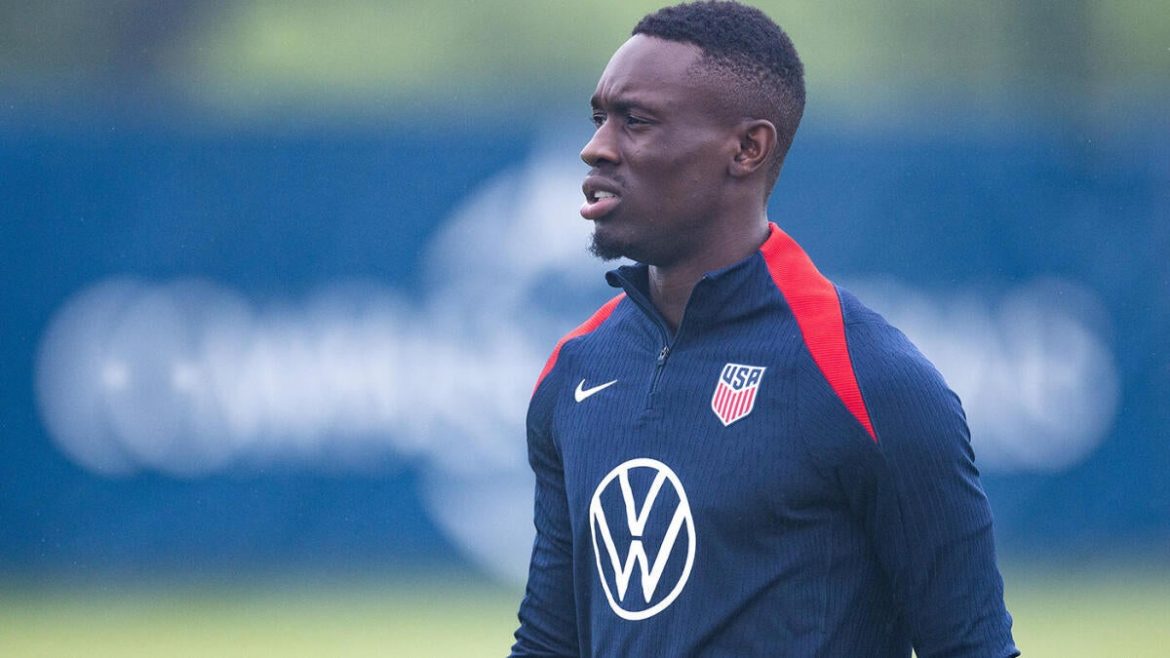Folarin Balogun’s Injury and Its Impact on USMNT: An In-Depth Analysis
Folarin Balogun, a promising forward for both AS Monaco and the United States Men’s National Team (USMNT), has been facing a series of injury setbacks that have significantly affected his availability for both club and country. His ankle and shoulder injuries have led to withdrawals from important rosters and training camps, disrupting plans around the USMNT’s strategic deployment in key competitions, and prompting updates to squad selections. This report delves into the timeline and nature of Balogun’s injuries, the consequences for USMNT, and the wider implications on player management and squad dynamics.
Timeline and Nature of Folarin Balogun’s Injuries
Balogun’s injury concerns have emerged prominently over recent months:
– Ankle Injury: Reports from June 2025 indicate Balogun departed USMNT training camp due to an ankle injury, resulting in his omission from the CONCACAF Gold Cup roster—one of the marquee tournaments for the US men’s team. The injury was underscored as significant enough to affect immediate participation but details about the severity were not fully disclosed by AS Monaco or USMNT officials.
– Shoulder Injury: Prior to the ankle issue, Balogun suffered a dislocated shoulder during a Ligue 1 match for Monaco—specifically noted about October 2024. This injury required a substantial recovery period, with projections keeping him sidelined for approximately two months, ruling him out of competitive action for both club and USMNT during that timeframe.
– Recovery and Returns: Sporadic updates noted Balogun’s tentative returns after periods on the sidelines, including rejoining training and tentative call-ups to USMNT camps, only to be withdrawn again due to recurring or new injury concerns.
Impact on USMNT Roster and Forward Line
Balogun’s injury problems arrive at a critical juncture for the USMNT:
– Roster Adjustments: With Balogun sidelined, coach Mauricio Pochettino revised the USMNT rosters for major tournaments and training camps, bringing in replacements such as Paxten Aaronson and Walker Zimmerman. This shift highlights the challenges in maintaining squad continuity and quality while managing injury absences.
– Forward Position Shifts: Balogun’s absence exacerbates the USMNT’s need to identify reliable striking options. Other forwards, including Tim Weah and Johnny Cardoso, have also been absent due to injuries, demanding that younger or less experienced players step into roles of increased responsibility.
– Strategic Considerations: Coach Pochettino faces a scenario where first-choice forwards are unavailable, necessitating tactical adaptations and squad rotation. The inclusion of players like Aaronson signals a potential shift toward developing emerging talents under pressure, which could have longer-term benefits despite short-term disruption.
Broader Context: International Allegiance and Player Development
Balogun’s situation extends beyond injuries into matters of international allegiance and player career trajectory:
– Switch from England to USMNT: Balogun’s one-time FIFA switch to represent the United States instead of England’s youth teams has been a significant development. His injuries have delayed what could have been a timely integration into the USMNT setup, influencing both his international debut timeline and team-building efforts.
– Player Potential and Club Performance: Despite his injury setbacks, Balogun has demonstrated high potential through his club performances with Monaco, contributing goals and showcasing offensive prowess. His ability to recover fully and regain form is crucial for both club ambitions and his role in USMNT’s evolving attacking scheme.
– Injury Management and Future Prospects: The repeated injuries raise considerations about Balogun’s medical management and conditioning. Proper rehabilitation and cautious reintegration will be key in preserving his athletic career and maximizing his availability for future USMNT campaigns, including World Cup qualification and beyond.
Conclusion: Navigating Challenges and Optimizing Future Outcomes
Folarin Balogun’s injury challenges have imposed tangible impacts on the USMNT’s competitive planning and squad composition. His repeated ankle and shoulder injuries removed a key forward option from critical matches, compelling the coaching staff to adapt and elevate alternative players like Paxten Aaronson. The USMNT’s ability to sustain offensive threat without Balogun underscores the importance of depth and developmental pathways, particularly amid injury crises.
Balogun’s journey—from switching international allegiance to managing setbacks—illustrates the complex interplay of athlete health, international representation, and competitive strategy. As he continues recovery efforts, his reintegration will be pivotal not only for his own career ambitions but also for the USMNT’s forward line stability and international success in upcoming tournaments. Thoughtful injury management, combined with tactical flexibility, will enable the team to navigate this challenging phase while positioning for future achievements.





